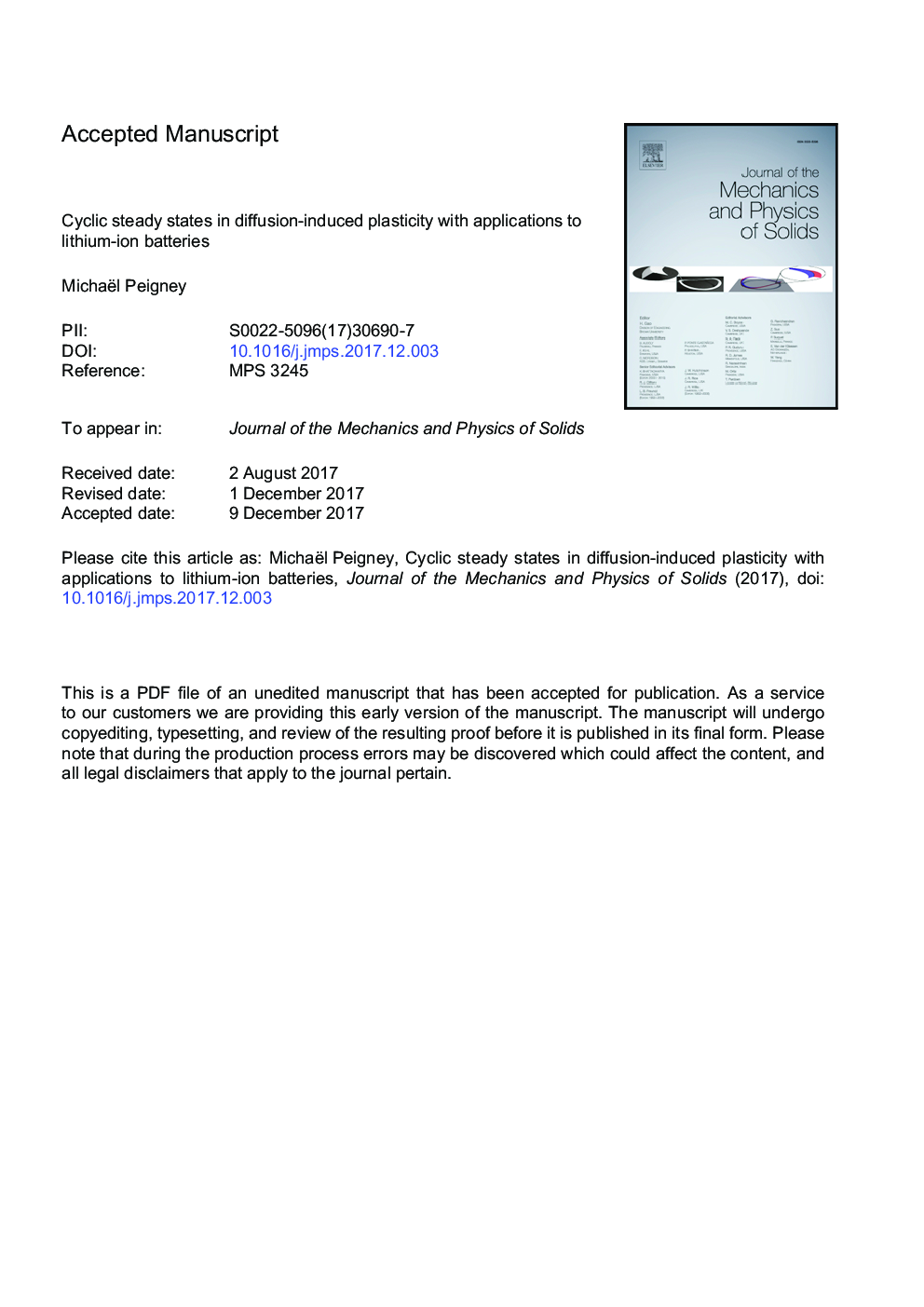| Article ID | Journal | Published Year | Pages | File Type |
|---|---|---|---|---|
| 7177584 | Journal of the Mechanics and Physics of Solids | 2018 | 46 Pages |
Abstract
Electrode materials in lithium-ion batteries offer an example of medium in which stress and plastic flow are generated by the diffusion of guest atoms. In such a medium, deformation and diffusion are strongly coupled processes. For designing electrodes with improved lifetime and electro-mechanical efficiency, it is crucial to understand how plasticity and diffusion evolve over consecutive charging-recharging cycles. With such questions in mind, this paper provides general results for the large-time behavior of media coupling plasticity with diffusion when submitted to cyclic chemo-mechanical loadings. Under suitable assumptions, we show that the stress, the plastic strain rate, the chemical potential and the flux of guest atoms converge to a cyclic steady state which is largely independent of the initial state. A special emphasis is laid on the special case of elastic shakedown, which corresponds to the situation where the plastic strain stops evolving after a sufficiently large number of cycles. Elastic shakedown is expected to be beneficial for the fatigue behavior and - in the case of lithium-ion batteries - for the electro-chemical efficiency. We provide a characterization of the chemo-mechanical loadings for which elastic shakedown occurs. Building on that characterization, we suggest a general method for designing structures in such fashion that they operate in the elastic shakedown regime, whatever the initial state is. An attractive feature of the proposed method is that incremental analysis of the fully coupled plasticity-diffusion problem is avoided. The results obtained are applied to the model problem of a battery electrode cylinder particle under cyclic charging. Closed-form expressions are obtained for the set of charging rates and charging amplitudes for which elastic shakedown occurs, as well as for the corresponding cyclic steady states of stress, lithium concentration and chemical potential. Some results for a spherical particle are also presented.
Keywords
Related Topics
Physical Sciences and Engineering
Engineering
Mechanical Engineering
Authors
Michaël Peigney,
